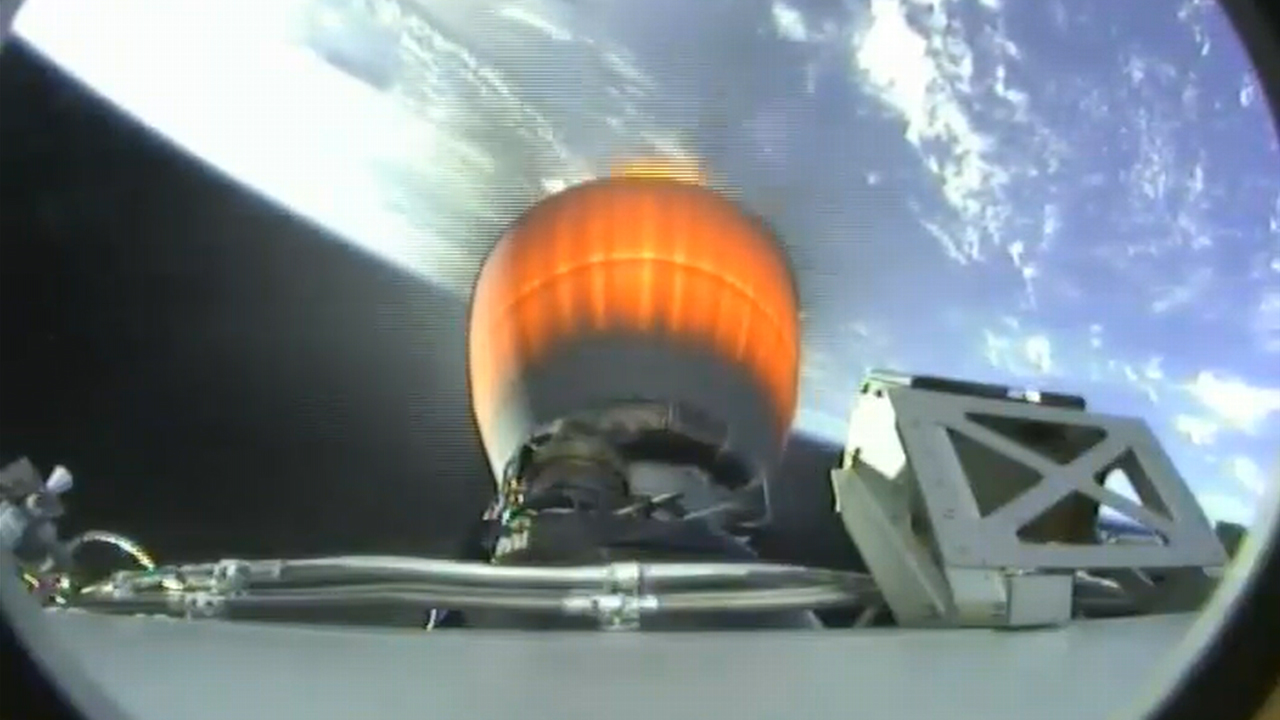A Falcon 9 rocket and Dragon spacecraft headed off the Earth on Tuesday, April 14, loaded with research so astronauts on the International Space Station can conduct experiments for the Earth and help scientists understand human reactions on long-duration flights like those required for a journey to Mars.
Known as CRS-6, for the sixth cargo resupply mission, the launch was the second station-related flight of the year for the Hawthorne, Calif.-based SpaceX. The Falcon 9 v1.1 hit the instantaneous launch window at 4:10:41 p.m. EDT to rise above the lightning towers at Space Launch Complex 40 before arching over slightly to place it on a precise course to the space station orbiting some 257 miles above the planet. The first stage burned out and separated on schedule with the second stage taking over lifting work and completing Dragon’s voyage. It will take two days for the spacecraft to reach the orbiting laboratory to deliver its supplies.
“Five years ago this week, President Obama toured the same SpaceX launch pad used today to send supplies, research and technology development to the ISS,” said NASA Administrator Charles Bolden. “Back then, SpaceX hadn’t even made its first orbital flight. Today, it’s making regular flights to the space station and is one of two American companies, along with The Boeing Company, that will return the ability to launch NASA astronauts to the ISS from U.S. soil and land then back in the United States. That’s a lot of progress in the last five years, with even more to come in the next five.”
The spacecraft is loaded with more than 2 tons of material, including items needed for 40 of the 250-plus experiments to be conducted by the station crews during Expeditions 43 and 44. Some of the experiments will focus on astronaut Scott Kelly, one of two men who recently began a yearlong mission on the orbiting laboratory so they can help determine changes and possible solutions to several dilemmas posed by extended missions. The work is crucial to NASA’s knowledge of the effects on astronauts of missions to distant worlds including Mars.
One of the experiments will explore the changes in common bone cells of mice to see what changes in the cells in microgravity. Astronauts routinely loose bone mass during missions and researchers want to stop that bone density drop-off. The field is also of deep interest on Earth where any solution to the problem for astronauts may also apply to people on Earth suffering from osteoporosis.
Scientists also want to determine how much fluid shifts in the body in weightlessness so they can figure out whether changes in astronauts’ vision are related to additional pressure in the brain from fluids that gravity would otherwise force into lower parts of the body.
Some of the research focuses on synthetic muscle to see how it withstands radiation in low-Earth orbit. Artificial muscles could one day replace some of the metal components in robots to give them more human capabilities without reducing their capacity to perform tasks that would help astronauts on the station.
The Dragon’s scientific contribution will not end with the delivery of its 4,300 pounds of experiments and equipment. Astronauts will pack the spacecraft with some 3,000 pounds of used gear and unneeded packaging. Completed science experiments will also be loaded into the capsule. After about five weeks in orbit, the Dragon will separate from the station and fly an automatic trajectory to return to Earth through the atmosphere and parachute to the Pacific Ocean off the coast of California.
After retrieval, the Dragon can be unloaded and the hardware sent to its home center for analysis where necessary. Scientists will get their work back, too, for more evaluation as new research is considered for upcoming missions on the station.



























